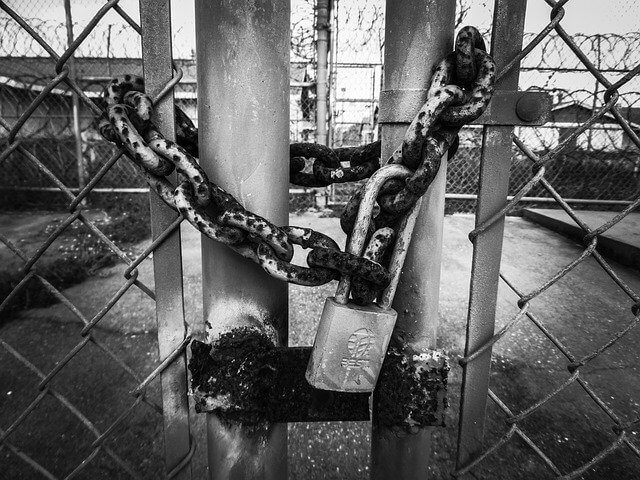
10.06.2020
Execution and Garnishment
In this article we will deal with the enforcement and seizure procedure. How and when enforcements are initiated, request for discovery of assets and the order and limits to seizures.
 Por
Castellano Gallego, Jesús
Por
Castellano Gallego, Jesús Execution and Attachment Actions
An enforcement procedure is the one seeking to enforce a judgment. In our legal system there are basically two enforceable obligations, the obligation to do and the obligation to give.
The obligation to do intends that the sentenced person carry out an activity. For example, a repair on a property.
The giving obligations are usually of two kinds. The unusual is the one seeking the delivery of a specific thing, for example, a painting or a jewelry piece. The most common is the payment of a specific amount of money and its interests.
In fact, in Spain the great majority of sentences are for the delivery of a sum of money. Either for a debt, or for a compensation of damages. Therefore, most executions are monetary executions.
That is, executions seeking to have the defeated party to pay the winning party the amount to which it has been sentenced.
And how do you get the defendant paying that amount to which he has been sentenced?
In a perfect world, the defendant will pay once he is served with the judgment, without need to enforce it. This will save the costs and interests of the enforcement. But in real world, the defendant is often unable or unwilling to voluntarily pay. So, to enforce the judgment and request the seizure of the debtor’s assets will be the only alternative.
In this article, we will try to explain how to proceed with the attachment of property. What assets are subject to seizure, which are the most convenient, etc.
Unfortunately, this quiz has a limited amount of entries it can recieve and has already reached that limit.
Seizure, how do we define it?
Attachment/Seizure is the judicial act by which the debtor’s assets and rights are used for the payment of the credit. It grants the enforcing creditor the right to receive the benefit of the proceeds from the enforcement.
When the judgement can be enforced?
In the case of judicial enforcement of judgments, when can the enforcement procedure be initiated?
- After 20 working days from the transfer of the judgment to the creditor if the creditor did not appeal it. (Working days are those that are not weekend days or public holidays).
- After the above 20 days mentioned period, another 20 days must pass before execution can be initiated. (art. 548 LEC)
These deadlines do not apply if the executive title is not judicial. Only in the case we are treating in this article, which is the execution of judicial titles.
The execution claim is filed in the same court that issued the ruling on the case. Execution is ordered for the amount due, “the principal”, and the law also allows for an increase of 30%. This 30% is provided for in the LEC, to cover interest and costs, in article 575.
Si te ha interesado este artículo no dudes en leer:
Executory proceeding: fixed debit deed
Assets Investigation Request
Usually, we do not know which assets are owned by the debtor. So therefore, we have a judgment to enforce, but against which assets?
The executed will be required to designate assets beforehand, which does not imply that this request will be fulfilled. This requirement is provided in Article 589 LEC, which stipulates coercive fines to the executed who does not respond to it. In practice, the imposition of this type of fine is not at all common.
So, we will have to ask the Court to access the Neutral Judicial Information Point (Punto Neutro de Información Judicial). The Neutral Point is a network that provides the courts with information for proceedings, including executive proceedings.
For the purpose of asset investigation, the judicial neutral point may consult (among others) the following authorities:
- Cadastre
- State Tax Agency
- Association of Real Estate and Commercial Property Registrars of Spain,
- General Traffic Department,
- National Institute of Employment,
- National Police (to find out the address of the executed person)
- General Treasury of Social Security
- Financial Institutions
With the information provided by this consultation, we will be able to see if the executed person has assets, and request their seizure. For example, bank balances, Tax Agency returns, seizure of salaries…
We must also have in mind, the “duty of collaboration” established in art. 591 LEC. This duty imposes, to any individual or public or private entity, to collaborate with the judicial execution proceedings. For example, informing commercial relations with the debtor, so the creditor balances can be seized in favor of the debtor.
Order of seizures
Unless otherwise agreed between creditor and debtor, the court shall seize property in the following order (Article 595.2 LEC):
- Money or bank accounts of any kind.
- Credits and rights realizable on the spot or in the short term, and securities or other financial instruments admitted to trading on an official secondary securities market.
- Jewelry and art objects.
- Income in money, whatever its origin and the reason for its payment is.
- Interest, income and produce of all kinds.
- Movable or semi-movable property, shares, securities admitted or not to official quotation and company shares.
- Real estate.
- Wages, salaries, pensions and income from professional and independent commercial activities.
- Credits, rights and securities available in the medium and long term.
Limits on seizure
- Voluntary Consignation. If the executed, consigns principal and interest, within 10 days after the notification of the lawsuit , there is no embargo. (Art. 585 LEC). In practice, there are exceptions, e.g. the seizure of accounts is done before the notification of the claim.
- The seizure must always be proportional to the debt. (Art. 584 LEC). It is not possible to request the seizure of goods whose value far exceeds that of the debt.
- Unattachable assets and rights. They are regulated in articles 605, 606 and 607 LEC:
3.1. There are goods that are absolutely unattachable by law (Art. 605 LEC):
1.º The goods that have been declared inalienable. (which cannot be disposed)
2.º Accessory rights, which are not alienable regardless of the principal.
3.º The goods that lack, by themselves, patrimonial content.
4.º The goods expressly declared unseizable by any legal provision.
3.2. Unattachable assets of the executed.
We consider the following to be unattachable assets of the executed (Art. 606 LEC):
1.º The furniture and household items of the house, as well as the clothes of the executed and his family. In what cannot be considered superfluous, goods that are essential.
2.º The books and instruments necessary for the exercise of a profession, art or trade to which the executed person is dedicated. This, provided that their value is not in proportion of the amount of the debt claimed.
3.º The sacred goods and those dedicated to the cult of legally registered religions.
4.º The amounts expressly declared unseizable by law.
5.º The goods and amounts declared unseizable by International Treaties ratified by Spain.
3.3. Salaries and pensions not attachable.
They are regulated in article 607 LEC:
- Wages, salaries, pensions, remuneration or equivalent, which do not exceed the amount of the minimum interprofessional salary, are not subject to attachment.
- Wages, salaries, fees or pensions that are higher than the minimum inter-professional salary shall be seized in accordance with this scale:
- For the first additional amount, up to double the minimum inter-professional salary, 30%.
- For the additional amount, up to the amount equivalent to a third minimum inter-professional salary, 50%.
- For the additional amount, up to the amount equivalent to a fourth minimum inter-professional salary, 60%.
- For the additional amount, up to the amount equivalent to the fifth minimum inter-professional salary, 75%.
- For any amount exceeding the above amount, 90%.
If the customer receives several payrolls/pensions, everything is summed up to calculate the unattachable limit.
For family charges of the executed person, the wage and pension attachment may be reduced by 10 to 15 %.
The limitation on the minimum inter-professional wage does not apply to child/spousal support. (art. 608 LEC).
- Is there a limit to the number of seizures?
No. It is possible to attach successive seizures to previously seized property, but the earlier seizure takes precedence over the later one.
- How many investigations into assets can I make during the enforcement procedure? Can I extend the initially agreed attachment?
At any time when the sufficiency of the seized assets is in doubt, an improvement in the seizure can be requested. Example: If as a result of the first consultation, no assets of the debtor appear, but that he later receives an attachable salary.
This is provided in article 612 LEC, which also indicates that the initially agreed seizure can be enlarged.
See e.g. the debtor who continues generating debt against the enforcer. The latter, may be interested in an enlargement of the initial enforcement. A classic example is a judgment for the payment of rent. After the judgment, rent can still be generated, which can lead to an enlargement of the attachment.
And so far, our summary of the discovery of assets and the practice of attachments. This is a much more in-depth subject, any further information or questions you may have, we are happy being of help.
If this article has been of interest, we also suggest you to read the following article published on our website:
Impossible enforcement of a court decision
Precautionary measures in civil proceedings
Contacto No te quedes con la duda, contacta con nosotros. Estaremos encantados de atenderte y ofrecerte soluciones.












